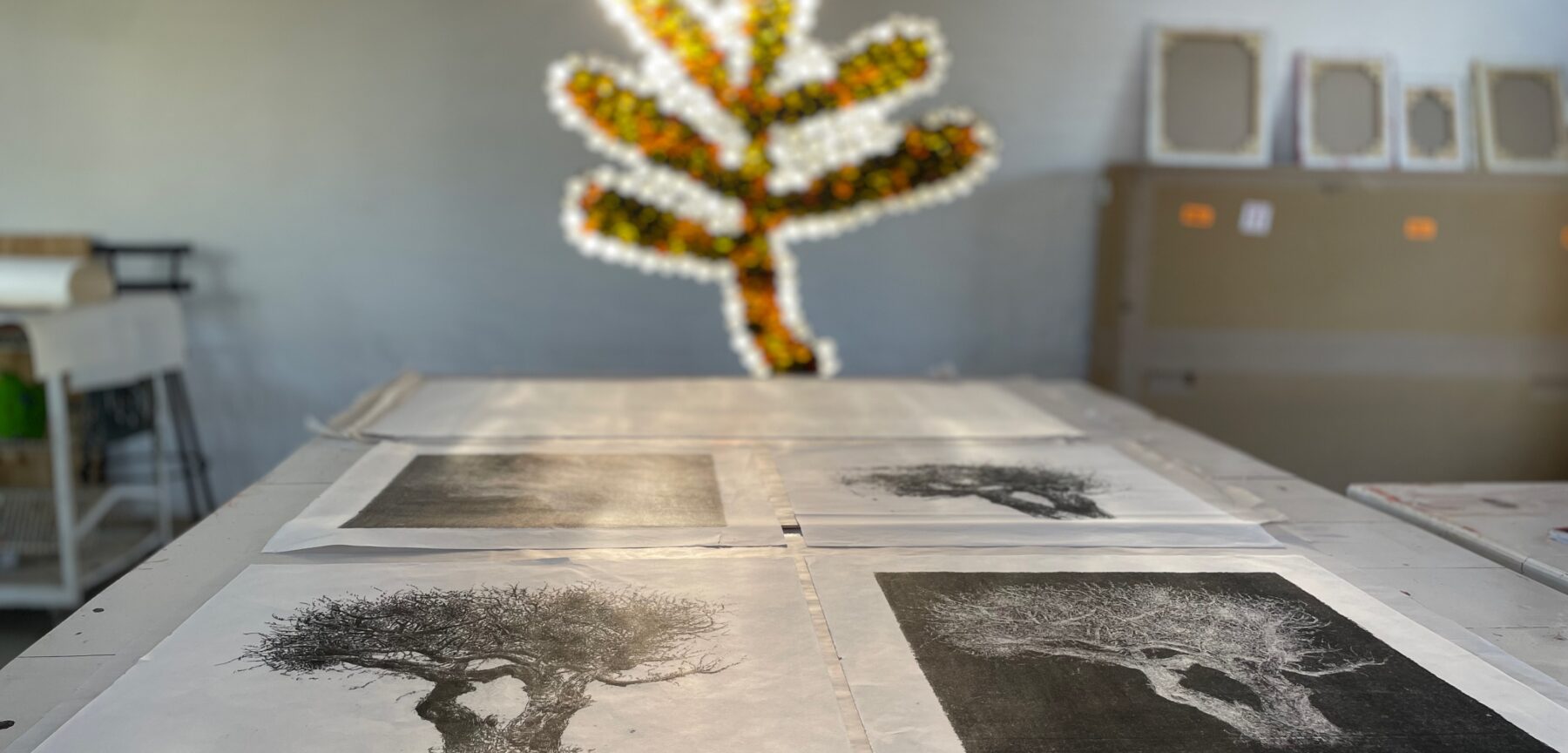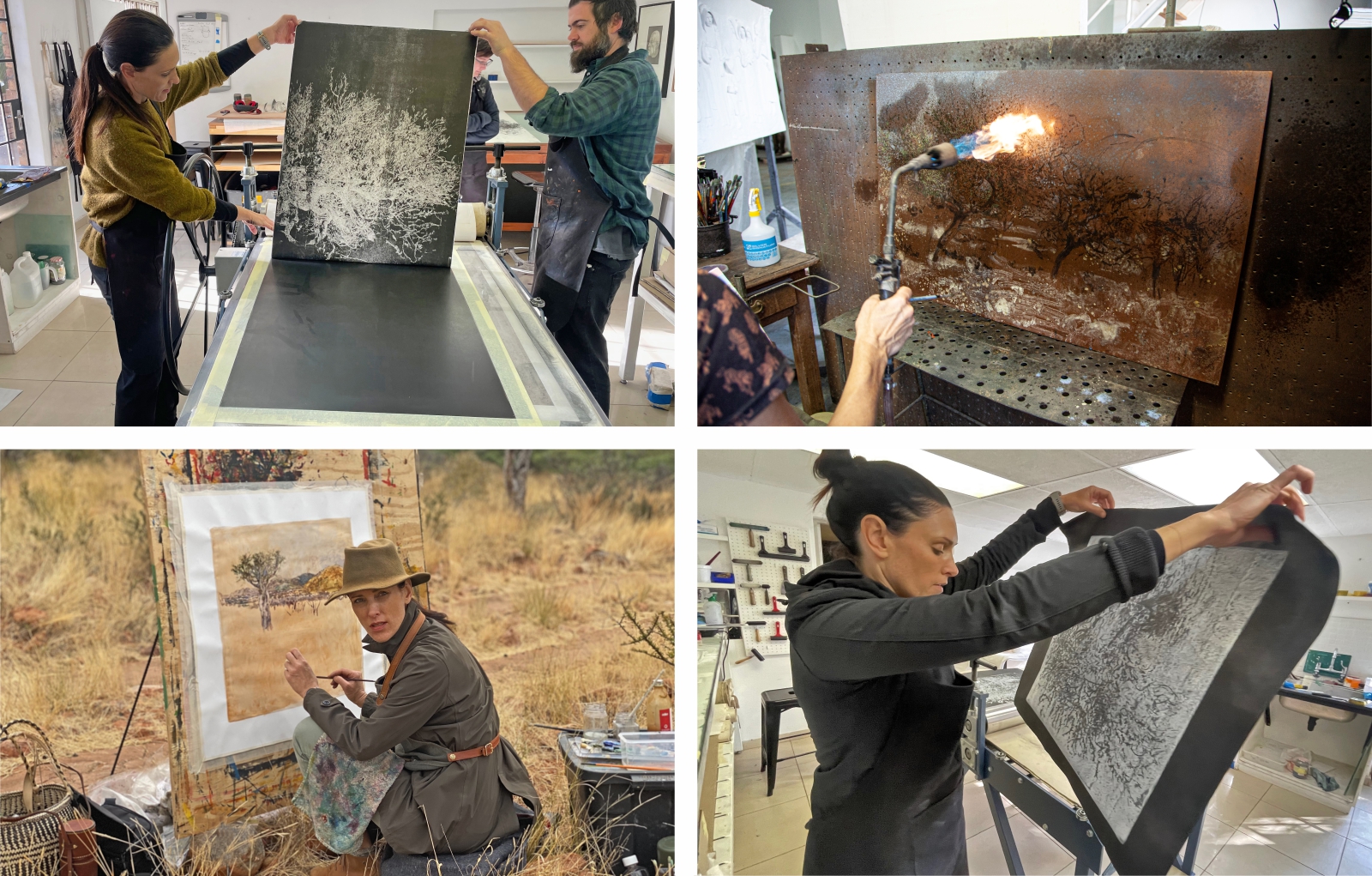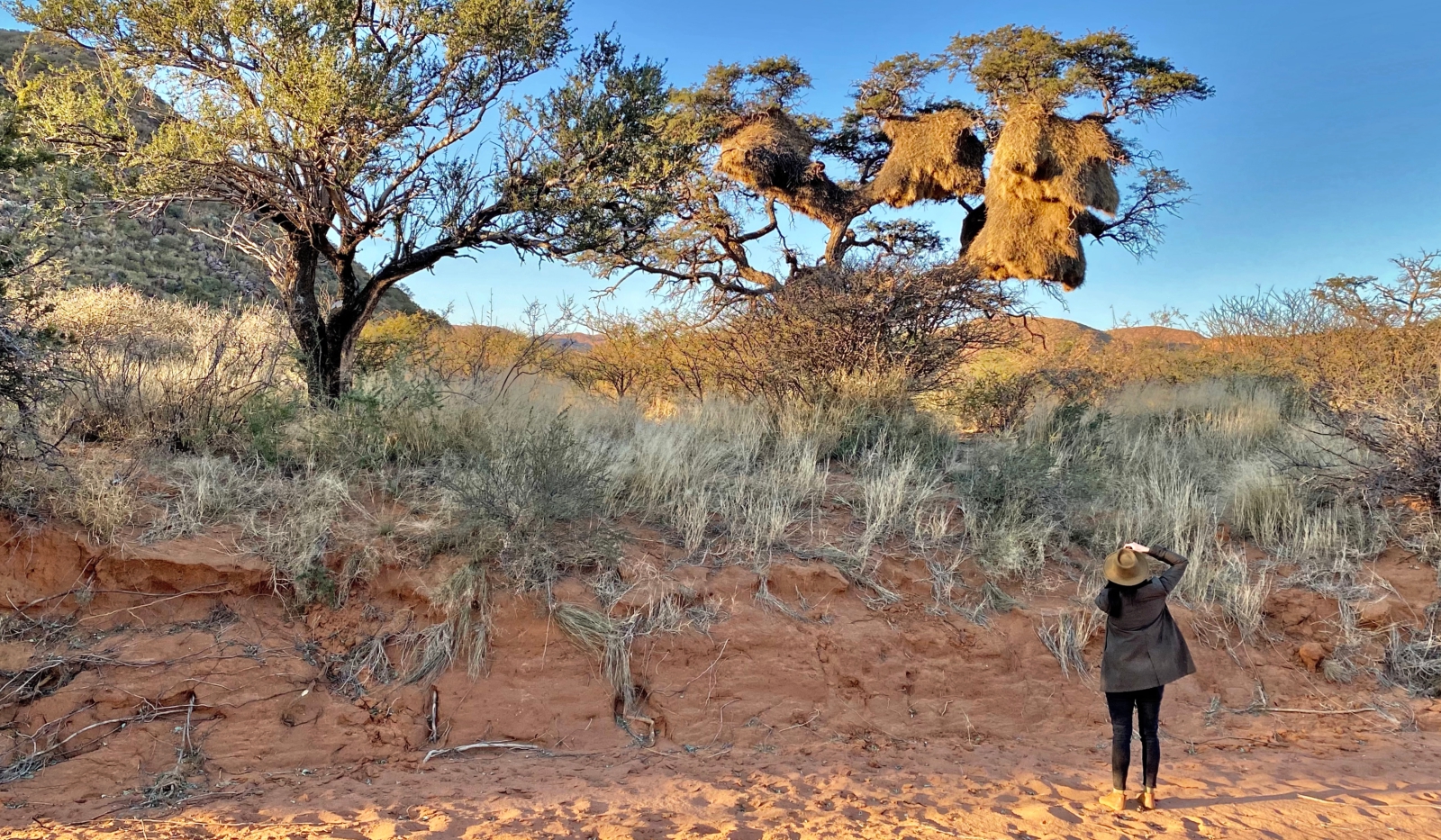A PARALLEL WORLD OF SLOWNESS AND LIGHT
Rina Stutzer works as a full-time artist. Her work deals with impermanence – the provisional, temporal, perishable and transitory – in both materials and process. Using various methodologies, Stutzer investigates and questions ideas of permanence in contrast to the transitory nature of life. In 2021, she spent six months at Tswalu as part of the Tswalu Foundation’s Artists in Residence programme. The body of work, titled ‘A Parallel World of Slowness and Light’, forms part of the TSWALU RESIDENCY EXHIBITION at the Everard Read Gallery in Johannesburg, South Africa.
Early on in the residency, I decided to move the studio into the veld to be as close to and immersed in the environment as possible. My en plein air (in the open air) session had many wild ‘models’ traversing the surrounding landscape. Being exposed to roaming passersby in the wilderness made me feel alert and focused. But amongst all the memorable experiences during the residency, being exposed directly to the flora affected me the most.
A PARALLEL WORLD OF SLOWNESS AND LIGHT*
I had been observing the Boscia albitrunca* tree from a distance for years, en route between South Africa and Namibia to visit family. At the beautiful Boscia Pan in Tswalu, I found myself surrounded by a concentrated formation of trees dotting an endless sea of soft-yellow suurgras (sour grass). I admire the Boscia trees’ formal qualities that attest to their adaptations to environmental pressures. A highly specialised, yet ‘hidden’, reason for its resilience is the plasticity of its roots combined with its deep-root water uptake. They brought to mind a more careful consideration of the species as subject matter for my artwork.
First, I familiarised myself with the trees through in-situ visual studies: en-plein-air oil painting, watercolour sessions, charcoal sketches, and photos. Thanks to a new in-house printmaking studio at our own studio and foundry, I could explore an array of new materials which I brought back from a residency at the Cité Internationale des Arts in Paris. After numerous monotype-based experimentations, I found a risky process that offered interesting visual feedback with many surprising rewards.

The series of tree prints revealed an honest and ‘plain-speaking’ directness in the chosen process. To create the monotype images, I had to start with a mirror-image of the ideal, only seeing the result of the ‘right-way-around’ after the paper was lifted off the ink tablet. Once the drawing had been completed on the back of the rice paper and the thin sheet carefully lifted off the ink tablet, a clean off-white rice paper sheet was carefully laid over the residue of the drawing on the ink slab. From this a ghost print, or reduction print, is produced by rolling the surface through the etching press. This printing process results in a study of a tree captured by day and by night. To me, there is a calm, repetitive, cyclic, even meditative, feeling emanating from the series. The starkness of black and white and the simplicity of the subject matter relates to the silent, calm atmosphere of final work. I decided to title the monotype representing day ‘Lightbearer’, since Boscia trees embrace and ‘bear’ the blazing Kalahari sun by turning the ‘light’, through photosynthesis, into growth. They present themselves as lightbearers, with a white-washed trunk. Thirdly, the trees are proverbial ‘lightbearers’, or even teachers, since my interaction with them ultimately inspired me to learn more about their environment and place therein.

I also continued with a body of work using patina on copper that I started some years ago. The patina is unfixed and of a shifting nature, changing over time, reflecting and referring to an ever-changing landscape. The patina paintings are made from rolled copper plate ‘painted’ by applying intense heat from gas flame and moisture (with chemicals) from water spray or brush application. This process produces an image that ‘grows’, by manipulating the oxidation process with different chemicals. The copper background, and the ground surface it provides, matches the Kalahari sand hue that forms the underlining base layer of the ‘treescapes’. The shrubs, grasses and trees painted on the copper will change as the rusts continue to develop, just as trees, shrubs and grass do. Trees extend the human mind, help shape our cognitive development, and support our evolution as they offer us shelter, medicine, food, tools, and technology. They were part of creating the conditions for life on earth. Trees ought to make us think more! The night version of the printed monotypes I titled ‘Until the trees bring me to mind’. After every day’s veld excursions, I took time to consider what I had seen and learnt, which led me to ask, ‘When do we take time to consider the mammoth supportive role that trees play in our lives?’
“If what a tree […] does is lost to you, you are surely lost/ Stand still” (‘Lost’ by David Whyte)
The conservation of indigenous trees, such as Boscia albitrunca in the Tswalu reserve, helps to lessen the impact of climate change. They can sustain life during long periods of little or no rainfall, as they continue to grow and yield fruit. They also house biodiversity, thereby maintaining genetic diversity. They are indeed little ecosystems in themselves. By conserving these keystone species, all the life forms they sustain are inherently protected.
In the words of Hermann Hesse, ‘trees are the most penetrating of preachers’.

Footnotes:
*Ramakrishnan, E.V. (2006) ‘Tamarind Tree.’ Terms of Seeing: New and Selected Poems, Konark Publishers, 2006.
*Ramakrishnan, E.V. “Tamarind Tree.” Terms of Seeing: New and Selected Poems. 2006. Poetry International. Poetry International Publisher, https://www.poetryinternational.com/en/poets-poems/poems/poem/103-14081_THE-TAMARIND-TREE. Accessed 3 September. 2022.
*Boscia Albitrunca’s common names are: Shepherd’s Tree, White-stem Tree, and Coffee Tree (English); Witgat, Witstamboom Matoppie (Afrikaans); umGqomogqomo (Xhosa); umFithi (Zulu), molthopi (Tswana); mohlopi (North Sotho); muvhombwe (Venda) and omutenderereti (Herero).
Images of Rina Stutzer by Christo Niemandt. Image of Tswalu Kalahari taken by the artist.
The TSWALU RESIDENCY EXHIBITION showcases Rina Stutzer’s body of work, ‘A Parallel World of Slowness and Light’, inspired by a shared residency with Angus Taylor at Tswalu Kalahari. Currently on show at Everard Read Johannesburg, South Africa, until 21 December 2022. For further information, please contact Everard Read Johannesburg [email protected]

